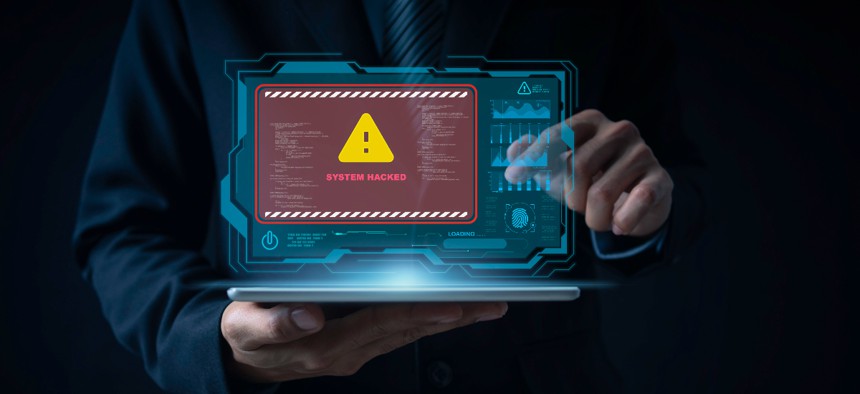State-Sponsored Actors Leading Cause of Cyber Concern in Public Sector

Teera Konakan/Getty Images
A new SolarWinds report details how foreign hackers have become the largest concern among government entities, and how zero-trust strategies have become the most popular defense.
Foreign state actors have evolved to be viewed the biggest threat to digital networks in the U.S., with a new report surveying public sector organizations on the current cybersecurity landscape finding that 60% of all respondents are concerned over attacks from foreign actors.
The report, commissioned by the software company SolarWinds—which itself suffered a major cyber attack in 2020 that resulted in data breaches at several government agencies—looked at survey responses from 400 public sector information technology leaders within federal, state and local governments.
When asked about sources of security threats, most respondents named foreign governments as their greatest concern. Brandon Shopp, the group vice president of product strategy at SolarWinds, told Nextgov that the significant jump in this concern from 2021 to 2023 was a surprise.
“One of the key highlights that came out of the survey was just how much state-sponsored cyber activities and how much organizations or agencies, be it at the federal level or even down at the state, local and education level…just how much more they view them as a threat,” he said.
State-sponsored cyber attacks have been a present concern for years, but the marked increase noted in the report demonstrates how government organizations see it as a leading threat—particularly among federal respondents.
Shopp attributes this broadly to Russia’s ongoing invasion of Ukraine, which has partially contributed to an uptick in state-sponsored cyber attacks in recent years.
Behind foreign threat actors, 58% of respondents found careless or untrained insiders to be their biggest threat in their digital networks, with 52% listing the general hacking community as the third largest concern.
When distilled by the individual type of cyber threat, the top three areas of concern were ransomware, trojans and spam. Information technology complexity––closely followed by budget constraints—was listed as the lead barrier to safeguarding networks from attack.
Despite these institutional concerns, Shopp stated that many organizations are taking a more serious approach to a zero-trust strategy as a means of controlling access to sensitive information.
“A lot of these agencies…are…looking at zero trust much closer and looking at what are the policies—zero trust policies—that they want to execute within their environment and put in place within their environment,” he said.
Enthusiasm for zero-trust solutions was reflected in the report; while just 31% of respondents reported having a formal zero-trust strategy in place in their digital ecosystem, 54% said that they are modeling their approach based on zero-trust principles, despite having no formal strategy in place.
Nearly half of respondents (48%) reported zero-trust as “very important” to a cybersecurity approach, and SolarWinds found that 85% of public sector entities surveyed in the report use a formal or informal zero-trust model.
“The reported importance of implementing a zero-trust approach is high among all public sector organizations,” the report reads. “Nine out of ten report it to be very/somewhat important, which is a significant increase from eight out of ten in 2021.”
“You are seeing a lot more organization where that [zero-trust] has moved up on their priority list. Whereas in previous cyber surveys that we've done, it's been something that they've been aware of and that they've been thinking about and investigating and looking at, but …there wasn't a sense of urgency per se,” Shopp said. “It has definitely moved up in a lot of agencies’ and organizations’ prioritization.”






